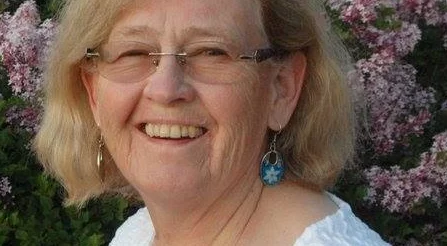Frenier: Universal school choice would set free American spirit of innovation – Vermont Daily Chronicle

Part three of a three-part series
by Carol Frenier
If the children in your community are getting into college easily without needing remedial preparation; if they can function well in language and numbers; if they are able to take on good jobs; if they understand the history, values and morals that the majority of the community shares; then the issue of school choice is unlikely to come up at all.
But the increase in school choice programs nationally is signaling that many parents are not happy with their options and feel powerless to do anything about it.

Probably the central complaint about our public schools today is their failure to prepare our young for college or the workforce. Unfortunately, Vermont test scores reflect this national trend. In 2018 (pre-covid), only 55% of all grade nine students were proficient in English Language Arts. The Math scores were worse: only 35% proficiency.
Harvard professors Goldin and Katz1 point to a “productivity crisis” caused in part by the reduction in the link between accountability and funding. Our robust history of grassroots educational creativity in the 20th century has been swallowed up by state and federal mandates that are linked to funding that local districts cannot afford to turn down.
Also a factor is the reduction in incentives to attract talented teachers. “Bureaucratic inflexibilities,” Goldin and Katz assert, “are legion.”
Flexibility and multiple options are key to innovation as much now as in the past. As Thomas Sowell2 pointed out in his groundbreaking study on New York City charter schools,
“By allowing more autonomy and flexibility in public charter schools than in the more tightly controlled traditional public schools, it was hoped that new educational policies and practices that emerge from this experiment might produce some better educational results. In that case, traditional public schools would have these new policies and practices available to use if they chose to, thereby benefitting the much larger number of students in the traditional public school sector.”
This bottom-up approach is essential in a world where the dissemination of information has exploded, and individuals can access “expert” knowledge from a nearly infinite variety of scientific and professional sources previously obtainable only to a chosen few. Individuals all over the world have used these new tools to make informed decisions about issues important to them. The public school monopoly model is not sacrosanct; in fact it might be the least effective option for the future.
Universal school choice could recapture some of the free-wheeling innovation of the 19th and 20th centuries. Whether in sending towns or not, all parents would be free to select any school currently open to Vermont students, whether government operated or independent, regardless of where the student lives.
In the words of the 2009 Ethan Allen report on VT education4, “…the great majority of parents and children have the capacity to identify the kind of education most suitable to their children’s needs and preferences, and … public financial support for education should flow not through…bureaucracies, but directly through [parents] to a wide array of educational providers, some public, some private….”3
Critics argue that such a program would destroy our existing public schools. That was not the case when parents in previous generations freely moved from one district to another to get their children into a school they preferred.
And school choice, it turns out, only means wholesale abandonment of a local school if a school is truly terrible. The history of school choice in multiple dozens of US cities and states demonstrates that we could expect a large percent of parents to keep their children where they are.
Nor should we imagine such a program would create administrative chaos. Vermont’s vocational technical schools. provide a model for how school choice could be managed.
School choice, then, offers three powerful effects:
First and foremost, it incentivizes innovation that could break us out of our educational performance malaise.
Secondly, it would open a pathway for children with unique needs and skills to get served effectively.
Finally, it would put the power of the dollar back in the hands of communities and parents, making it possible for educators to shift their attention away from the educational bureaucracies and more toward the communities they serve.
1.Goldin, Claudia and Lawrence F. Katz, The Race Between Education and Technology, Harvard University Press, Cambridge, MA, 2008.
2. Sowell, Thomas. Charter Schools and Their Enemies, Basic Books, New York, NY, 2020.
3. Ethan Allen report 2009 report on VT education, Better Value, Fewer Taxpayer Dollars: The Report of the Commission on Rebalancing Education Cost and Value.
